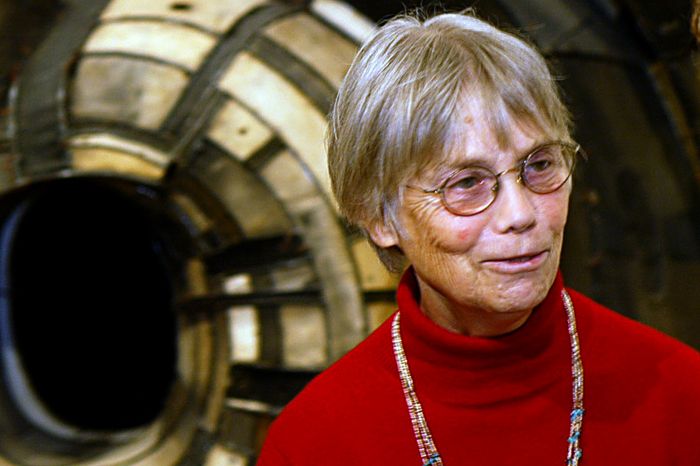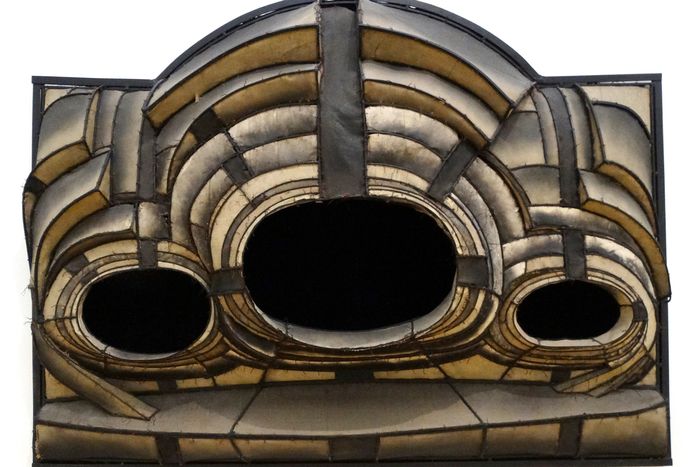
In 1972, the American artist Lee Bontecou, who died this week at age 91, showed a series of plastic flowers and vacuum-formed fish and sea creatures in New York. She felt she got bad reviews and left the city, settling in rural Pennsylvania, where, with her artist husband, she raised a child (“Having a baby was the most wonderful piece of sculpture I ever made,” she later said). For 20 years she commuted to Brooklyn College to teach, but her low-to-no profile turned her into a kind of ghost artist.
She was also already a legend. In 1962, Donald Judd, citing her three-dimensional works — raw canvas stitched together in great bulging forms over wire armature, erupting from their frames like volcanic hell holes — called her “one of the best artists working anywhere.” He was right. Bontecou’s best-known pieces, which have been referred to as “vagina dentata” (only art by women gets this sort of restrictive treatment), were simultaneously painting and sculpture, embodiments of a mythic libido and an anarchic consciousness. When Eva Hesse saw her work, she said, “I am amazed at what this woman can do.”
Bontecou was one of the very few women who exhibited at Leo Castelli, the most important gallery of her era, home of artists like Judd, Jasper Johns, Andy Warhol, Robert Rauschenberg, Bruce Nauman, Frank Stella, and many others. Starting around 1960, she started making these pre-modern-looking sculptural organisms that were like peering into dead craters. Here were these Cubistic-constructivist visions, dead planets unto themselves, fabricated from hard and soft materials, steel mesh and sooty or stained fabric, their construction involving welding and sewing. She once said, “I want to awaken in the beholder some dormant reality.” When I first encountered her work in the 1970s, she was one of the first contemporary artists to allow me to crack the code of what art was.
In 2004, when she was 73, a large retrospective revived her reputation and granted her a new audience. The map to Bontecou seemed to be redrawn in an instant. Now there were wonderful, delicate mobile-like objects that looked like strange solar systems or celestial sailing vessels propelled by unseen solar winds, and insect-looking shapes and dragonfly structures with wire antennae and legs. But it was her early works — some with saw blades embedded in orifices — that still commanded attention. She pulverized form, reshaped and rebuilt it; created her own abstract language and sculptural cosmos; and cleared so much space around her that her art stands mighty and alone in the great art forest of late-20th-century art.


